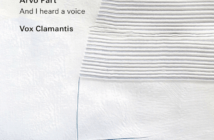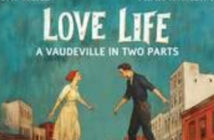The Lebrecht Weekly
Visit every week to read Norman Lebrecht’s latest column. [Index]
————————————————————————
From Catwalk to Concert Hall
by Norman Lebrecht / March 15, 2000
TEN in the morning is not the best time to meet a musician, or a catwalk model. Even if they have not been working the night before, the alarm has yet to go off in their body clock and the sales pitch is not fully programmed.
Nina Kotova seems pleasantly woozy when I call at her Kensington hotel. The make-up is on, but not the mask. The face that launched a thousand frocks appears unfocused. Face-on, it is Slavically flat. Only in profile does the bobbed nose and upturned chin meet the unnatural criteria of the glamour industry.
For two years, Kotova was a hired clothes horse, pictured in Cosmopolitan and Glamour. A musician by training and vocation, she strutted the fashion shoots until she had enough money to buy a decent cello. Then she returned to the serenity of music where, by the perverse logic of modern times, she is being marketed as the gorgeous ex-model who plays the cello.
The dichotomy is painful. Kotova, 28, would like to be loved for her music. Her management and record company are selling her on looks. She connives in their strategy, knowing that beauty sells.
But there is a price to pay. Any girl who pouts before she plays is bound to get bracketed in the bimbo genre – alongside Vanessa-Mae Nicholson, who arose in a see-through swimsuit, and the busty Linda Brava, who posed for Playboy in nothing more than a spangling of angel dust. Both are big on EMI, neither is the next Heifetz. Nicholson plays the press more tellingly than she does Beethoven, while Brava displays the virtuosic individualism of a former back-desk violinist in a Helsinki pit band.
Kotova, whose debut disc is out on Philips, is a cut above that sort of thing. She studied cello on the Moscow fast track. She knows her music. She also writes the stuff: dour, adolescent sketches on art, love and life in other people’s clothes. She has got some of what it takes. The question is, can she make it last longer than this spring’s fashion?
In Russia, she was raised at the Moscow Conservatoire, where Maxim Vengerov was briefly a classmate. “It was tough,” she recalls. “If you missed one gym lesson, you didn’t play in the concert.”
Her father, Ivan Kotov, was a former alumnus, studying in the same class as Yuri Bashmet, Natalya Gutman and Vladimir Spivakov. Kotov won a 1973 competition in Geneva but fell foul of Soviet bureaucracy and was denied a solo career. He wound up playing double-bass – “fifth double bass,” she says bitterly – in the state symphony orchestra under Yevgeny Svetlanov.
Kotov was threatened with incarceration in a mental institution for bouts of misbehaviour. In 1986, at 35, he died. “I was really young,” says Nina, a sob in her voice. “He had flu and never received proper treatment in hospital. It was arranged.”
Months later, aged 15, she triumphed in a Prague competition. Back home, a professor told her mother “take her away from here, there is no future for her.” The Soviet Union was falling apart but the cardboard suits still ruled the musical species and the young cellist was made to feel an outcast.
In 1989, she applied to study in Cologne with Boris Pergamenshikov, a Russian exile. She was spotted by a visiting academic from Indiana, and, while waiting for a US visa, returned to Moscow where her mother was about to marry a well-off English businessman, whom she refuses to name.
She also avoids naming the college – “I was not treated very well” – or her present boyfriend, a Dallas art patron. There is much about Kotova that she holds close to herself. After three years in the Midwest she won a scholarship at Yale, better known for raising lawyers than musicians. Inside three months she dropped out, unable to pay for board and lodging.
Staying in New York with friends of her stepfather, she passed by an open audition for new models and walked in. “There was huge excitment, and I didn’t realise why,” she recalls. “Someone said, ‘Oh, you’re so beautiful, and so tall’.”
At 5ft 11in she could carry any garment with aplomb. Within weeks she was flying from show to shoot with unflustered ennui. Serene indifference enabled her to stroll unmolested through a clutter of cocaine and casual sex. She made no friends among the supermodels.
“I think I was just very different,” she explains. “I could not really open my soul to everyone. I did not want to get hurt. One photographer [no names], he was an artist who read me poetry.”
In London, she wrote to 12 concert agencies, one of which, Manygate, booked her for a Wigmore Hall recital and a concerto at the Barbican with the New Queen’s Hall Orchestra. “We never knew much about her,” said John Boyden of Manygate. “She was modelling, and was not always easy to contact.”
Kotova did not stick at modelling long enough to make a major cover, or the mega-fees. “I now earn more by playing the cello than I did modelling,” she says. Her turning point was not a standing ovation or rave review but a discreet approach from the giant US concert agency, CAMI, whose cagy president, Ronald Wilford, spotted an opportunity and hooked a record contract.
For the past two years Kotova has plied the concert circuit as busily as she once toured couture. “I have not been home in Dallas for two months,” she sighs. She has yet to receive a booking from a major-league orchestra but there is no want of forage in the foothills. She has played the C-major Haydn concerto no fewer than 30 times in the past year.
Her invitation-only recital in London this week was notable for her restraint in the Debussy D-minor sonata, an expressionless reluctance to assert anything discernible of her own character. Physically, too, Kotova seemed to be holding herself in. “I think I have quite a strong individuality,” she told me, “but it is still developing. It is important for an artist to have his own voice.”
Whether Kotova can overcome these inhibitions remains to be seen. She has the ambition and ability to succeed, but she needs to shed the impassiveness of a mannequin before she can communicate musically. She is not a bimbo – far from it. What she represents is a more alarming modern product: the artist-with-a-story. This year it’s the ex-model cellist, next year the ex-coalminer who sings counter-tenor in St Matthew’s Passion.
Desperate times call for desperate remedies. There is no harm in owning an exotic past, provided it is kept in check. But if Kotova is ever to make it to the level she desires, she will need to prove herself twice as good as the next cellist to live down the ex-model label – and that is where no marketing campaign or bare-shouldered frock can help her.












